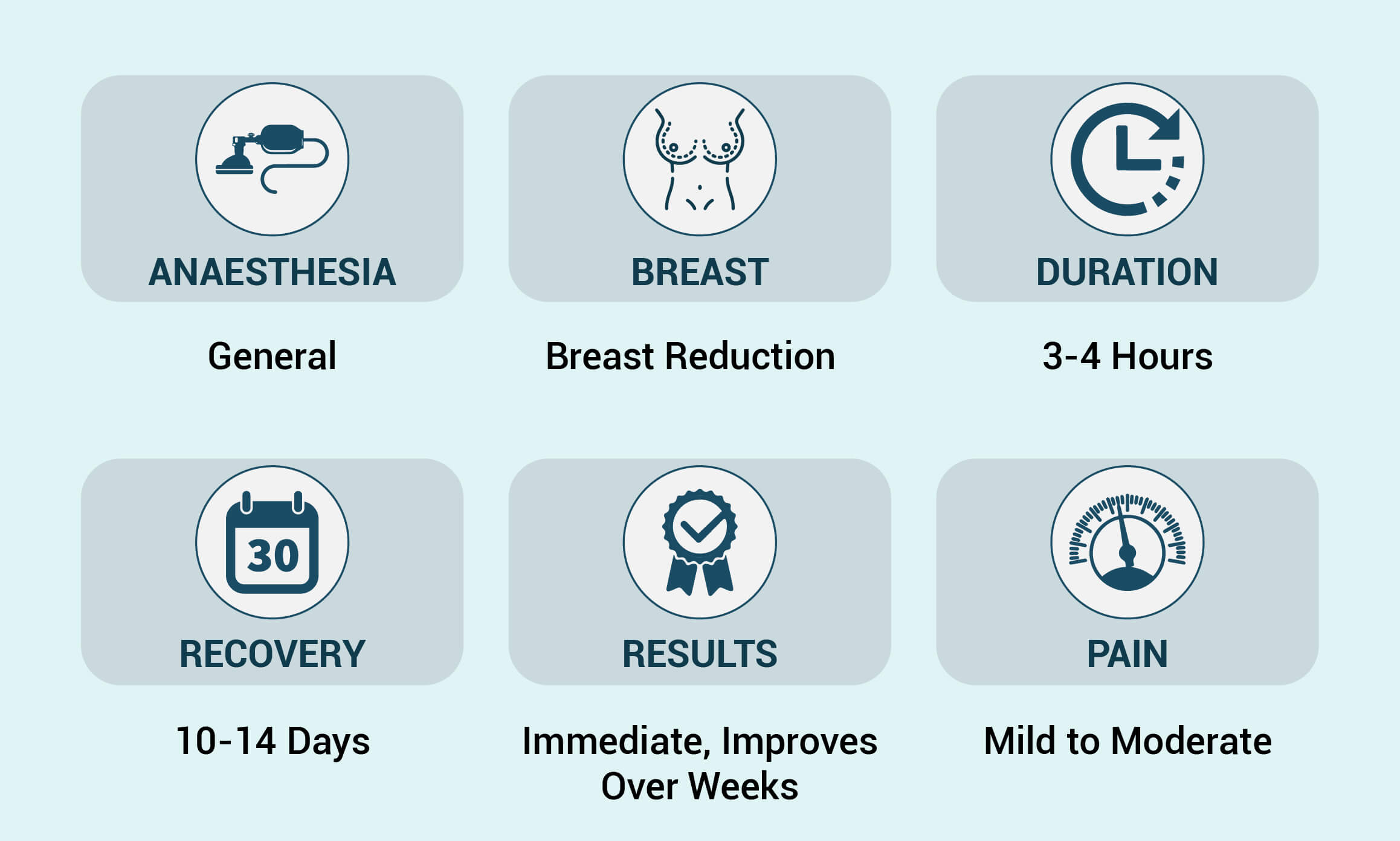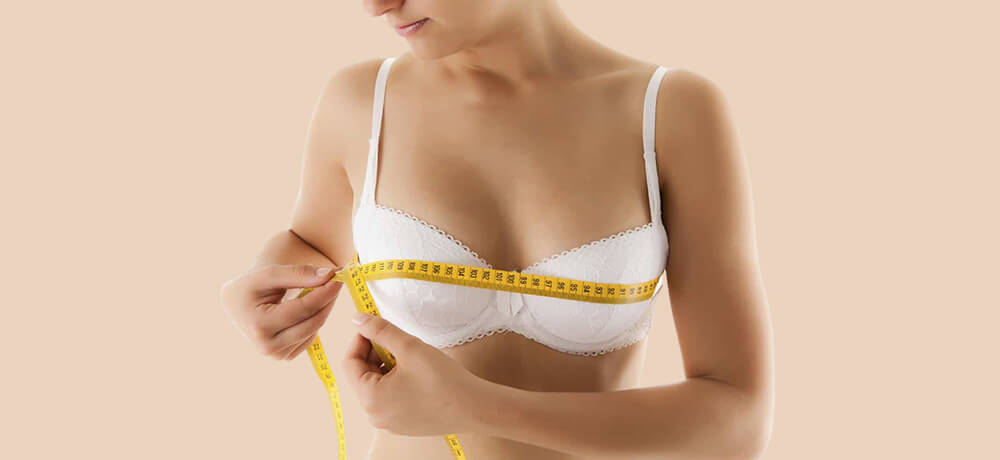Effective Breast Reduction Surgery in Mumbai for Women Seeking Smaller Breast Size
What is Breast Reduction Surgery?
Breast reduction surgery, also called reduction mammaplasty, can reduce the size of breasts by removing fat, breast tissue, and skin. The surgery can reduce physical discomfort caused by large breasts, such as back, neck, and shoulder pain, and improve overall breast shape and contour.
Consult Vinay Jacob, a plastic surgeon, if you're considering breast reduction surgery. It is important to understand what the surgery can do.

What does Breast Reduction Surgery do?

Breast reduction surgery enhances self-image. It boosts confidence and improves the ability to engage in physical activities.
The procedure lifts the breasts and corrects any downward pointing of the nipples, achieving both breast reduction and lift.
Moreover, breast reduction surgery enhances breast shape by restoring fullness to the upper part and addressing volume loss associated with aging, weight loss, and breastfeeding.
Breast Reduction Surgery Procedure
Breast reduction surgery, also called reduction mammaplasty, is a surgical procedure that aims to reduce the size and volume of the breasts. Here is a general overview of the breast reduction surgery procedure:
1. Consultation:
During the consultation, you will discuss your concerns, desired breast size, medical history, and expectations while the surgeon evaluates your breast size, shape, and health to determine your suitability for the procedure.
2. Anesthesia:
Breast reduction surgery is typically done under general anesthesia, ensuring you are asleep and pain-free during the procedure.
3. Incision
The surgeon will make incisions on your breasts, typically in anchor or keyhole shapes, based on the amount of tissue removed and your anatomy.
4. Tissue Removal and Reshaping:
The surgeon will remove excess breast tissue, fat, and skin, reshaping the remaining tissue to improve breast contour and achieve a proportionate size.
5. Repositioning of nipples and areola:
In most cases, the nipples and areola are repositioned to a higher position on the breast mound to match the new shape of the breast. If necessary, the size of the areolas can also be reduced.
6. Closing the incisions:
After the breast tissue has been reshaped and the excess skin has been removed, the incisions are closed with sutures. The surgeon may also use skin adhesive or surgical tape to secure the incisions further.
7. Recovery and post-operative care:
You'll receive instructions on caring for your incisions, managing discomfort, and supporting breast healing. A surgical bra or compression garment may be advised to aid recovery and reduce swelling. Follow-up appointments will be scheduled to monitor progress and remove sutures if needed.
Breast Reduction Surgery After Care
After undergoing breast reduction surgery, following proper aftercare instructions is crucial to ensure a smooth recovery and optimal results.
Here are some general guidelines for breast reduction surgery aftercare:
Your surgeon will provide instructions on caring for the dressings and bandages covering the incision sites. Keeping them clean, dry, and intact is essential, as advised.
Wear a special supportive bra or compression garment after surgery. This helps reduce swelling, provides support, and promotes healing.
Your surgeon will prescribe appropriate pain medications to manage any discomfort. Take the medicines as directed and report any severe or prolonged pain to your surgeon.
Avoid strenuous activities, heavy lifting, and exercise for a few weeks following surgery. Light activities, such as walking, can usually be resumed after a few days, but consult your surgeon for specific guidelines.
Keep the incision sites clean and dry, and avoid applying any creams, lotions, or ointments without your surgeon's approval. Protect the incisions from direct sunlight until they are fully healed.
Your surgeon will instruct you when to shower after surgery safely. Usually, you must wait a few days or until the dressings are removed. Avoid hot water and gently pat the incisions dry.
Attend all scheduled follow-up appointments with your surgeon. They will monitor your progress, remove sutures or drains if necessary, and guide your recovery.
Always consult your surgeon regarding any concerns or questions during your recovery process.
What does Reduction Mammoplasty aims to do ?
A reduction mammoplasty aims to re-size enlarged breasts and to correct breast ptosis (hang/sag). It resects (cuts and removes) excess tissues (glandular, adipose) and overstretched suspensory ligaments and transposes the nipple-areola complex (NAC) higher upon the breast hemisphere.
The specific reduction mammoplasty procedure is determined by the volume of breast tissues (glandular, adipose) to be resected (cut and removed) from each breast and the degree of breast ptosis present.
Pseudoptosis(sagging of the inferior pole of the breast, the nipple is at or above the infra-mammary fold).
Grade I:Mild ptosis (the nipple is below the IMF, but above the lower pole of the breast)
Grade II:Moderate ptosis (the nipple is below the IMF; yet some lower-pole breast tissue hangs lower than the nipple)
Grade III:Severe ptosis (the nipple is far below the IMF; no breast tissue is below the nipple)
Different Types of Breast Reduction Surgery
Circumareolar/Periareolar
This surgery can be performed simply with a circular scar running around the nipple areolar complex at the interface with the normal (Circumareolar or Peri areolar scar). This scar usually fades and is relatively inconspicuous.
Circum-vertical (lollypop)
A second option is to have a circular scar running around the nipple and a short vertical scar running below the nipple to the crease under the breast (circum-vertical or ‘lollypop’ scar).
Wise Pattern (Anchor)
The third and more extensive excision results in a keyhole pattern (Wise pattern). This produces an ‘anchor’ pattern whereby the scar runs around the nipple in a circular fashion and is connected with a vertical scar running from the nipple to the fold underneath the breast and small scar running in the groove underneath the breasts, which is hidden in the fold below the breasts.
Breast Excision Pattern
There are two common procedures employed.
Inferior Pedicle:The inferior pedicle technique preserves the nipple areolar complex on a pedicle of the breast tissue (parenchyma) based in the lower part of the breast. This technique has the advantage of potentially keeping breast sensation. It does however produce a more ‘boxy’ shape. There is also the possibility of “bottoming out” with time.
Supero-medial Pedicle:The second option uses a supero-medial pedicle. The pedicle preserving the nipple and gland is based on the upper, inner part of the breast. This technique permits a ‘coning’ of the breast and results in a better breast shape. The shape also is maintained more with time and does not ‘bottom out’.
Results
Some studies have shown that there is no difference between these techniques with respect to nipple sensation after a period of approximately two years, but there is usually more sensory loss initially with the supero-medial technique.
In some patients a breast reduction can also be performed using a combination of liposuction and excision (or mastopexy). This is a procedure usually reserved for older patients in whom the breast tissue (parenchyma) becomes replaced with fatty tissue (adipose tissue).
It is also a safe procedure to use in patients who require a second breast reduction in whom the original technique is unknown. An ultrasound scan is usually performed prior to the surgery to calculate the percentage of the breast which is adipose tissue.
The full, corrective outcome of the surgical re-establishment of a bodily-proportionate bust becomes evident at 6-months to 1-year post-operative, during which period the reduced and lifted breast tissues settle upon and into the chest.
Why choose The Plastic Surgeons
The team at the ‘The Plastic Surgeons’ with their extensive work and exposure internationally in this area of breast surgery are acknowledged as the best breast reduction surgeons.
They are called in from various parts of India as well as internationally, to teach the art of breast reshaping surgery to fellows and residents in Plastic surgery. Dr. Rajesh Gawai and Dr. Vinay Jacob achieve excellent breast reduction results.
 WhatsApp
WhatsApp